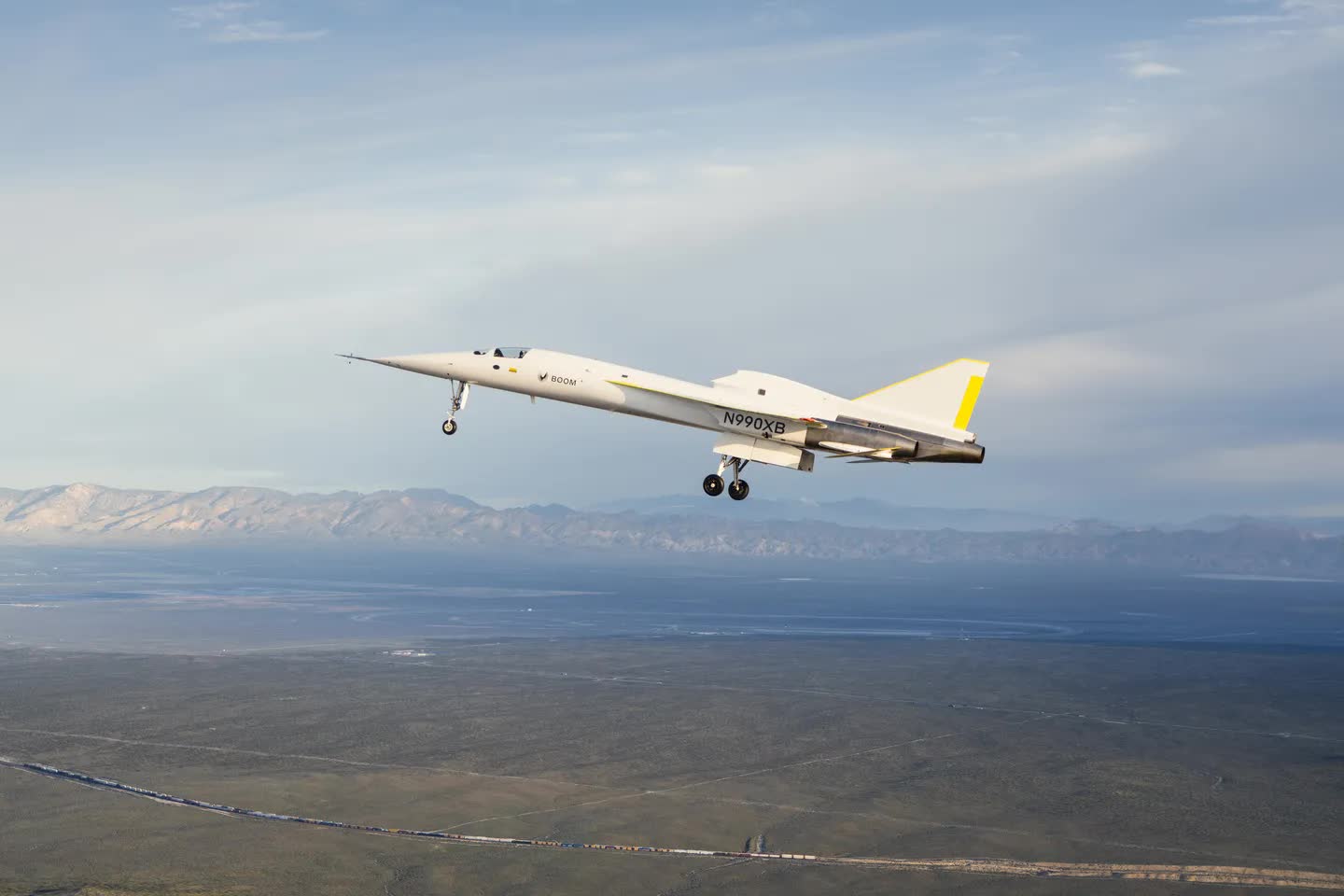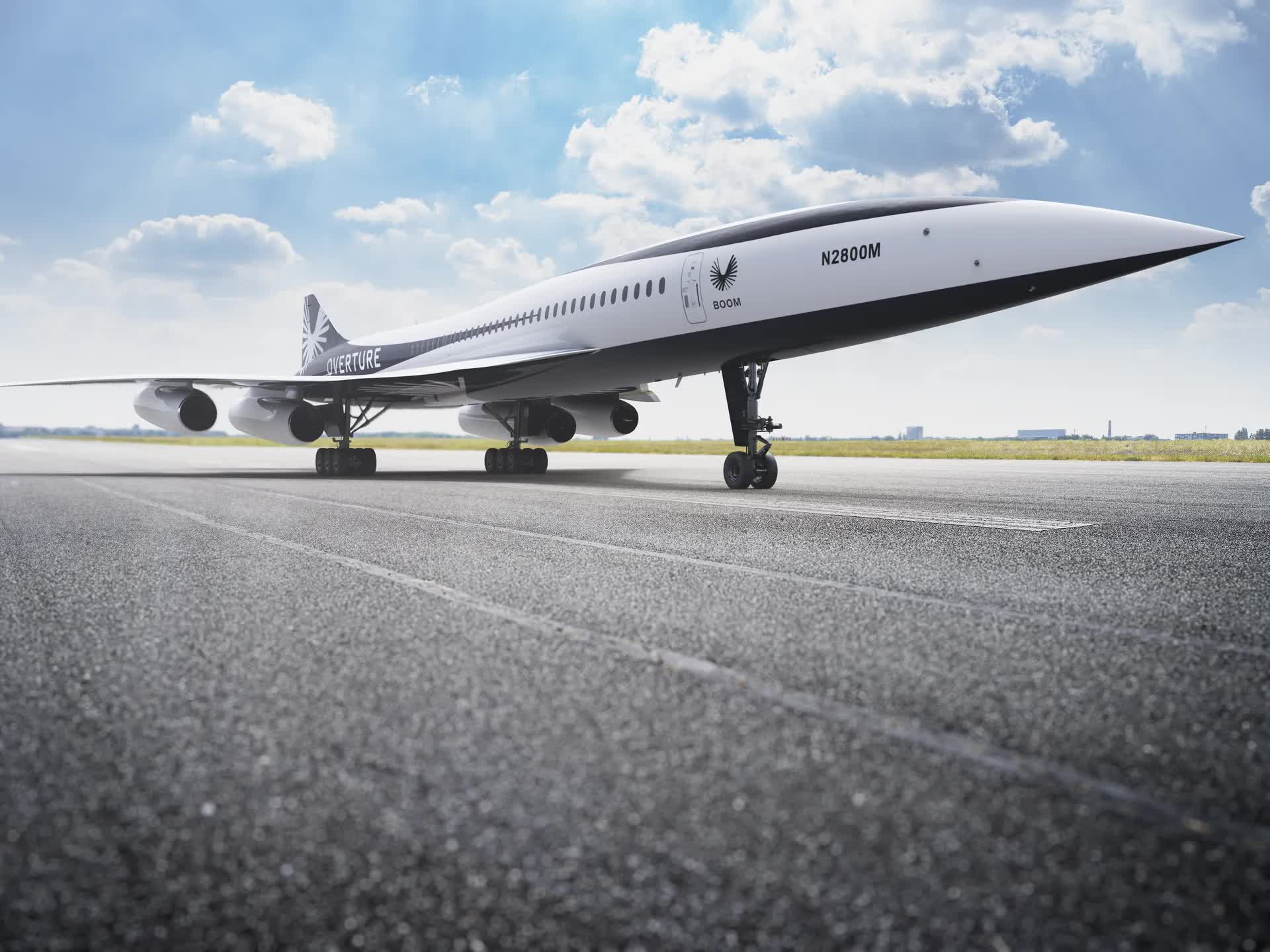What just happened? It's been 20 years since the last supersonic commercial aircraft, Concorde, was retired. But if startup Boom Supersonic's plan works out, a new jet flying faster than the speed of sound will take to the skies in the next six years. That dream has taken another step toward reality after a successful test flight of its prototype aircraft.
Boom Supersonic on Friday announced that its XB-1 prototype jet had completed a successful mission over the Mojave Desert.
The subsonic test flight began at 7:28 am on Thursday. The 62-foot jet reached a maximum altitude of 7,120 feet and a top speed of 246 knots (283 mph) before landing 12 minutes later.
Boom Supersonic writes that XB-1, which uses three 1950s-era J85 turbojet engines, is a demonstrator aircraft featuring several state-of-the-art technologies that will be used in Overture, the commercial supersonic aircraft that the company is working on. This includes carbon fiber composites, advanced avionics, digitally-optimized aerodynamics, and an advanced supersonic propulsion system.
"Today, XB-1 took flight in the same hallowed airspace where the Bell X-1 first broke the sound barrier in 1947," said Blake Scholl, founder and CEO of Boom Supersonic. "I've been looking forward to this flight since founding Boom in 2014, and it marks the most significant milestone yet on our path to bring supersonic travel to passengers worldwide."
Back in 2022, American Airlines announced that it placed an order for up to 20 Overture aircraft, with an option for an additional 40. United Airlines is also buying 15 Overture jets, and Boom Supersonic has manufacturing partnerships with Florida Turbine Technologies and GE Additive. However, The Verge points out that Boom Supersonic was dealt a blow in 2022 when British manufacturing giant Rolls Royce pulled out of its partnership with the company, leaving Boom to develop its own engines.
Boom Supersonic wants Overture's first test flight to take place before 2030. Three times larger than XB-1, the jet will carry 64 to 80 passengers at Mach 1.7, about twice the speed of today's subsonic airliners. It's also designed to run on 100% sustainable aviation fuel (SAF), and will be powered by four of Boom's own engines, called Symphony, each delivering around three times the combined output of the XB-1's three J85 engines.
There are some major obstacles Boom needs to address before Overture becomes a reality. The first is money: Scholl says the company has raised $700 million, but completing the supersonic jet could cost $8 billion. There's also the fact that regulations against sonic booms mean that Overture might have its full speed limited to times when it travels over water, though technologies could turn the booms into "thumps."
There's also the sustainability question; 64 passengers isn't a lot compared to what today's large aircraft can carry, and flying at those speeds will eat up a lot of fuel. However, SAF could help mitigate the environmental impact.
"We're still targeting being in the air around the end of the decade on Overture. There's a lot of work to do between now and then on that airplane, and our goal is to do it safely but also with a sense of urgency because we want this airplane for ourselves, our friends, our family, and our customers," said Scholl.

